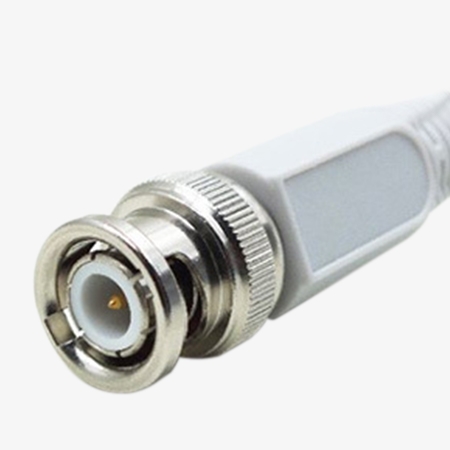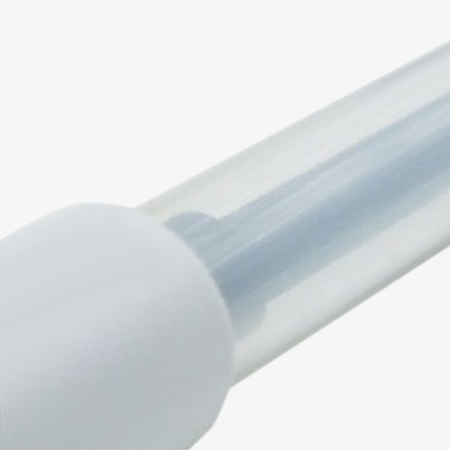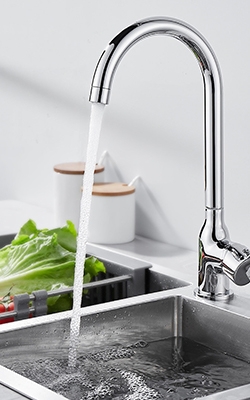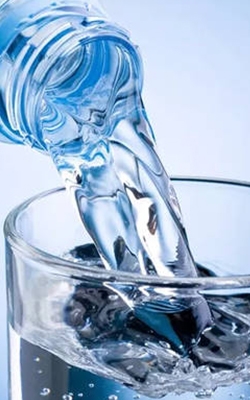The bromide ion selective electrode (ISE) is designed for accurate and reliable bromide ion measurements with a broad pH range of 2 to 13 and a temperature range of 0°C to 80°C, making it suitable for various applications. Featuring a durable epoxy resin casing and a salt membrane sensitivity, it ensures high selectivity and stable performance even in challenging environments. The electrode uses a BNC (Q9 type) connector for easy integration with measurement devices. For optimal performance, it utilizes a NaBr solution as standard solution and an ion strength adjuster (small amount of KNO₃ powder), making it an ideal choice for reliable ion analysis in both laboratory and field settings.

Designs Features of Bromide Ion Electrode
- Broad pH Range (2-13): The electrode operates effectively across a wide pH range of 2 to 13, making it suitable for various types of solutions and applications.
- Temperature Range (0°C to 80°C): This electrode ensures stable performance in both low and high-temperature environments.
- BNC (Q9 Type) Connector: Ensures compatibility with standard ion meters for easy integration into your setup.

Material and Structure of Bromide ISE
- Durable Epoxy Resin Casing: Provides enhanced strength and wear resistance of the bromide ion electrode, ensuring long-lasting performance.
- Salt Membrane Sensitivity: Equipped with a salt membrane, the electrode delivers enhanced sensitivity and accurate ion detection for reliable bromide ion concentration measurements.
Application
The ion selective electrode is a versatile tool widely used for monitoring and analyzing water quality across various applications. It is particularly effective in testing drinking water, domestic water, pool water, and industrial water, ensuring compliance with safety and regulatory standards. Its high sensitivity to specific ions makes it ideal for detecting trace contaminants in these water sources. Additionally, the electrode can be used for analyzing surface water and groundwater, providing critical data for environmental monitoring and pollution control. Whether for routine quality checks or environmental research, the ion selective electrode offers reliable, precise measurements to help maintain safe and clean water across different settings.

Domestic Water

Pool Water

Industrial Water

Drinking Water
| Model | SISCO-ISE-972103 |
| Type | Bromide ion composite electrode |
| Measurement Range | 2.0×10⁻⁶~1.0mol/L |
| Mass Concentration | 0.2~79900ppm |
| pH Range | 2~13 |
| Operating Temperature | 0~80℃ |
| Repeatability | ±2% |
| Liquid Junction | Separable ring ground joint |
| Reference Structure | ClickOK reference system |
| Reference Solution | ISE reference filling solution type D |
| Standard Solution | NaBr solution |
| Ion Strength Adjuster (Powder) | Small amount of KNO₃ powder |
| High-end Ion Strength Regulator | Ion strength regulator type Ⅰ |
| Housing Material | Epoxy resin |
| Sensitive Membrane Material | Salt membrane |
| Dimensions | Φ12×120 mm |
| Connector | BNC (Q9 Type) |
Q1: What is an ion selective electrode (ISE)?
A1: An ion-selective electrode (ISE) is a type of sensor designed to measure the concentration of specific ions in a solution. It is used in various fields, such as environmental monitoring, clinical diagnostics, and industrial applications, for real-time ion concentration measurements. ISEs are highly valued for their simplicity, accuracy, and ability to provide precise data without the need for complex sample preparation. These electrodes offer a quick and reliable way to monitor ion levels in a variety of solutions.
Q2: How does an ISE work?
A2: An ion-selective electrode (ISE) works by utilizing a membrane that selectively interacts with a specific ion in a solution. The electrode generates an electrical potential when the ion of interest interacts with the membrane. This potential is directly related to the concentration of the ion in the solution. The ISE typically consists of a reference electrode and an ion-selective membrane, which allows the target ion to pass through or interact with it, while minimizing the influence of other ions. The measured potential is then used, along with the Nernst equation, to calculate the ion concentration in the solution. This enables accurate and real-time measurement of ion levels.
Q3: What types of ions can an ISE measure?
A3: An ion-selective electrode (ISE) can measure a wide range of ions, depending on the type of membrane it uses. Commonly measured ions include sodium (Na⁺), potassium (K⁺), calcium (Ca²⁺), chloride (Cl⁻), ammonium (NH₄⁺), nitrate (NO₃⁻), and hydrogen ions (H⁺), among others. Each ISE is designed to selectively respond to a particular ion or group of ions, allowing precise measurements in different applications. For example, a sodium ISE can be used in clinical diagnostics to monitor blood sodium levels, while a chloride ISE may be used in environmental monitoring to assess water quality. The ability to measure specific ions makes ISEs highly versatile tools in fields like chemistry, biology, medicine, and environmental science.
Tips: What happens if the ISE membrane gets damaged?
If the ion-selective electrode (ISE) membrane becomes damaged, the electrode’s ability to accurately measure ion concentrations is compromised. The membrane acts as a selective barrier, allowing only specific ions to pass through, and if it is damaged, this selective function is lost. As a result, the electrode may start giving incorrect or unstable readings. It can either overestimate or underestimate the ion concentration due to interference from other ions or leakage of the internal electrolyte. Additionally, a damaged membrane can lead to a loss of electrode sensitivity, and the electrode may become less responsive to changes in ion concentration. In some cases, the electrode may fail completely, requiring replacement of the membrane or the entire electrode. To avoid these issues, proper handling and regular maintenance are essential to ensure the longevity and accuracy of the ISE.
Thank you for buying industrial test and measurement equipment on SISCO.com, all products sold by SISCO and the partner cover a 12 months warranty, effective from the date of receiving the products.
What is covered?
SISCO is responsible for providing free spare parts, and free technical support to assist the customer to repair the defective products until the problem is solved.
What is not covered?
- Product purchased from anyone other than a SISCO store or a SISCO authorized reseller.
- Expendable parts.
- Routine cleaning or normal cosmetic and mechanical wear.
- Damage from misuse, abuse or neglect.
- Damage from use of parts other than SISCO approved.
- Damage from use outside the product’s usage or storage parameters.
- Damage from use of parts not sold by SISCO.
- Damage from modification or incorporation into other products.
- Damage from repair or replacement of warranted parts by a service provider other than a SISCO authorized service provider.
- Damage caused by the application environment not meeting the product usage requirements and the failure to perform preventive maintenance.

